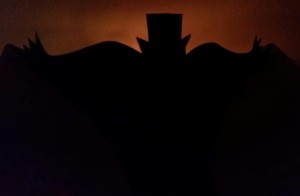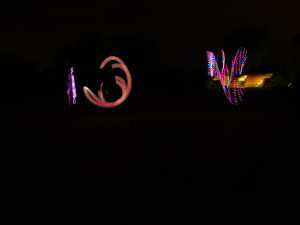With National Novel Writing Month having kicked off Nov. 1, I’ve been seeing different posts about novel writing popping up in my news feed. One post in particular caught my attention, as I found the advice in it to be terrible within the realm of my own experience.
The article, titled, “9 ways to trick yourself into writing a novel,” offers the following tips (in summary).
- Treat yourself
- Organize and set deadlines
- Write, or die
- Motivate yourself with the threat of embarrassment
- Pomodoro Technique
- Channel the power of Twitter
- Take a break from technology
- Join a writing group
- The snowflake method
The article expands on the various tips and links to other sites as appropriate. I’d thought I’d share my own thoughts on each tip before I offer my own. My intention is not to knock the work of the person that wrote this article for Mashable. For what it is and what it’s intended to do, it’s a fine article, but I just see problems. I’ve published two novels in a series. I’ve written at least one more that’s collecting dust on my hard drive (a NaNoWriMo novel). And I’ve completed half a dozen feature-length screenplays and a dozen more short stories. And to be fair, I should have written a lot more than that, but it took me a long time to refine my own long-term project methods. So, let’s begin.
Treat yourself
I do this and have done this. You just need to be careful not to let it become a distraction from doing the actual work. And if you never reach a point while writing the work where writing it becomes its own reward, then I suspect what you’re writing has no soul and you should probably discard it and attempt something else. Also, you can put on some pounds if you’re gobbling down treats every time you complete a chapter.
Organize and set deadlines
This kind of seems obvious, but I would rephrase it as planning and goal setting. You need to plan out roughly what your book will be about and when and how you will write it. And as you write your book, you should plan to make little wiki-style notes along the way. In my experience, such notes are useful for keeping track of some of the seemingly throwaway details you create on the fly while writing. For example, did I give that mook a scar on his left cheek? What color was the floor of the ballroom? Or, how many days does it take to travel from point A to B.
Unless the deadline is a real deadline, it’s meaningless. I say this because if you already don’t have the self-discipline to do the writing, then you aren’t going to have the self-discipline to adhere to a deadline you made up arbitrarily. Instead, make specific goals along a rough timeline. Decide that you want to have the first third of the story arc written by the end of winter. Or that you want to complete the work by the end of the year. Then create a kind of work breakdown structure for how much and how often you will need to write to reach this goal. Plan for interruptions, Create some milestones and use them to see how far behind or ahead you are in reaching the goal.
Write, or die
This is a gimmick. It’s an app that tries to frustrate you more the less you write. If it appeals to you, then fine. But writing is already hard enough without the equivalent of an Eternal Darkness: Sanity’s Requiem-style application for MS Word screwing with you.
However, it would be nice to have some positive reinforcement, akin to like a Fitbit or sports watch that gives you cheers you for writing and hitting various metrics. That probably exists somewhere and might be a far better alternative.
Motivate yourself with the threat of embarrassment
Just, no. If you have to go to that kind of length to write, just don’t write. It’s probably not for you. Find some other way to be creative. Maybe try film-making or painting.
Pomodoro Technique
Maybe this works for some people, but I’m very dubious. I normally need to write and/or edit for an hour or two before I get “warmed up” enough to actually start putting something decent on the screen. I get adjusted faster as I write more regularly and more often, but stopping and starting on a regular basis just seems like a bad idea. Every time you get out of that desk chair, you run the risk of not coming back.
Channel the power of Twitter
I’m somewhat guilty of using Facebook for this, but I do it to garner some encouragement and hoorahs from my friends for the work I’ve done. I guess, it’s fine, but just don’t tweet something that may put you on the spot and stress yourself out anymore than writing already does.
Take a break from technology
I get it. People have bizarre relationships with technology. Maybe you would be better off scribbling in a composition book than you would be typing away on a netbook. As long as you’re writing, you’re writing.
Join a writing group
Unless it’s for a class where you’re trying to complete a work to earn a grade, I’ve never found such groups to be especially helpful. It may seem like a good idea to have a group of peers at hand to encourage you and to also hold you accountable for not doing the work, but it usually just leads to people feeling alienated when they do fall behind their peers or when and if their peers celebrate their own success. Writing is very rarely a team sport and the group dynamics of a writing group can get challenging very quickly. Writing, unfortunately, is a very personal thing and it’s extremely difficult to separate the work from yourself. This gets especially problematic if you’re asked to critique the work of a less experience and/or bad writer or you receive invalid criticism of your own work.
If it works for you, great. I’d rather spend the time I’d waste dealing with a group on writing.
The snowflake method
I read about this method and it seems like a very good set of training wheels for starting a novel, but not actually writing it. I’ve known so many writers that spends hour and hours plotting out their books, creating entire biographies for their characters, drawing maps of their worlds, making family trees, and all other sorts of things for the book they want to write and the never write the book because they get so overwhelmed by their own planning.
Me, I like having a general idea of what I want to do and where I want to go with my story and I fill in the details and fix problems as I write and revise. Some things you just can’t plan for and shouldn’t plan for. Sometimes that random character you created to accomplish some menial plot objective suddenly starts growing in importance. When I was writing Divergent Chill: Battle of Nesma, I created Jerle and Agraven as a throwaway characters. I fully intended to kill them well before the end of the book. But they each, Jerle specifically, took on such a life of their own that I realized I couldn’t kill them. I needed them. And they were interesting, compelling characters. I could never have planned for Jerle and Agraven. They were conceived in one instantaneous moment—the kind of moment that drives us to write in the first place.
My Tips
I don’t like to think of myself as an expert source on writing, despite my schooling and experience. When I digest knowledge and skills, these things tend to operate on an almost subconscious level. I often do things because they “feel” right based on my cumulative experience, and not necessarily because I know them to be right. So, I don’t like to put together such lists, but maybe these will actually help someone.
Accept the work
Writing is hard. It’s not even enjoyable most of the time. And editing and revision is even more difficult. So, you want to write a book? Then just try to make yourself understand that it’s going to take a whole lot of time, a lot of sacrifice, a fair bit of misery, and the final result may be completely unworthy of the effort and remain unappreciated and unread. If you can truly understand this, consciously accept it, and still choose to go forward, then you at least have a chance of completing the book.
Accept the garbage
It’s a very, very rare thing when you can just pop open your word processor and start churning out written gold. Most of the time, you’re going to begin with a bowel evacuation. You just need to accept this as a natural part of the process and keep going. It’ll get better as you move beyond the initial, plodding awkwardness and really get into what you’re writing.
Planning is good;writing is better
So, you imagine writing a book with some characters doing various things for various reasons. You start making notes or using software to plot out what happens where and possibly why. You write descriptions and backgrounds for your characters to perhaps justify their actions in the plot or just to get a better understanding of how they act.
Here’s a thought. Just dive in and write it. Planning takes place outside the work. Writing takes place inside it. You see things very differently from the inside than you do on the outside. So, you envision some climatic duel between the protagonist and the villain on top of a burning bridge. Well, make an attempt at writing the scene. I promise you’ll be surprised at all the little things you didn’t consider initially, like the descriptions of the heat, the shape of the smoke, and the smell of the burning wood and what those characters may think of these things as they battle one another.
And that’s the key, most of the story in a novel is told through a character’s thoughts on things and I’m almost completely positive no writer details what his or her characters may be thinking moment to moment. This may take place in a general sense as it relates to how the characters must act to meet the plot requirements. But, actually writing out some of these more pivotal moments can even derail your plot and possibly make it better, especially when the planned-for actions and motivations of a character, even when seeming obvious, shift in your own mind. Maybe you originally planned for the villain to slay the protagonist’s mentor and then have the protagonist rage and calm as she gains a complete understanding of the mentor’s words during the battle that follows. And maybe while writing it, something clicks for you and suddenly the rage-to-calm-transition no longer feels right and you go with the protagonist going completely numb and almost experiencing the battle from outside herself. In any case, it’s something you can’t consider until you go there.
Story is your agenda
For non-literary writing, the story should be you’re only agenda. Too many writers don’t really want to write a novel. They want to write something that does X to the reader. “X” is a blank. It can be anything. It’s usually a writer wants to scare or disgust or sadden a reader. It has just as often been used for political or religious reasons. If you’re aim is to do this, then you’ve already failed. You have very limited, if any, control over how a given reader will receive your work, emotionally or intellectually. And if you’re manipulation is in anyway obvious, readers will shut you out and not feel or think anything at all.
Instead, focus on the story and the characters and disregard any notion of what the reader may feel. Because, those are the only things you have any true control of. And realize that readers are usually only affected by a work once they identify with some aspect of it and feel connected to it through a character or a setting. Until you’re able to do that, your readers won’t feel or think anything.
Ease into it
Trying to start writing is like trying to take a cold shower. It’s jarring, painful, and you just don’t want to do it. So, ease into it. If it’s a brand new work, I just start making notes about whatever I want in regard to the work. And then I might try to write a few of the things I’m imagining to see how they feel. Eventually, this can turn into a full-blown writing session. If I’m already working on a work, I find the best way to get going is to start with reading what I’ve already written, gradually making more and more revisions and edits, and as I reach the end of what I’ve already written, I start writing to continue the story.
Revise as you go
Following the previous tip, I find little else as useful as sitting down, reading (critically) what I’ve already written, making revisions and edits, and then writing. Other than the benefit of letting me prepare my mind for the chore, it lets me head off big mistakes, find new ideas within the work, notice and utilize overlooked elements and details later in the story, and finish with a relatively well-polished first draft.
You’re going to get stuck
Some may consider this writer’s block. Others will offer the excuse that what they’ve written is just so good and complicated they don’t know how to complete it. More will claim to have run out of ideas. The reason is irrelevant. Everyone gets stuck. When you do, you’re options are pretty clear and simple. You can quit, which defeats the purpose of this blog entry, or you can keep writing.
If you choose to keep writing, which you should, I suggest re-reading everything you’ve written with a critical eye. Except, you’re not looking for mistakes, you’re looking for things you haven’t really considered up to this point. There’s always something you can find and use to push your story forward. If you don’t find anything you can use, then it’s time to make something new that you can. Basically, if you’ve written yourself into a corner, then write the room into a circle.
If complexity has become your problem, then make things simple. Contrive ways to reduce the number of characters within a given “scene.” Move the character(s) into a far simpler, controlled environment. Have the character(s) do simple things for a chapter. You can make adjustments later.
Lastly, if you believe the well has run dry and you’re out of ideas, slap yourself. There’s no limit to human creativity. You’re really just saying you’re out of good ideas. That’s fine. You’re probably just burned out and need a short break from the work. You might also wants to consider your more absurd, bad ideas. Sometimes they can give you a new perspective on things, which will hopefully let you conceive of new, good ideas.
Only share a complete work
Never share an incomplete work. You’re just going to burn a reader you could have otherwise used to read the completed work. It’s also kind of a dick move when you really think about it. It’s like serving someone a half-cooked cake or sleeping with someone and leaving them unfulfilled. And what’s worse is that if you have them read the incomplete work and then you don’t finish said work, you’ve basically wasted their time. Do it too often and no one will want to read even your completed works.
So, just don’t do it. If you’re stuck, having someone else read your incomplete work isn’t really going to help you. They have no idea what you’re really trying to do, even if you spell it out for them, because they can’t have the full picture when you don’t even have it.
And if you’re fishing for encouragement, you’re doing it wrong. If you don’t believe in the work and what you’re doing enough to finish it without someone telling you how great your work is and that you need to finish it, then why did you start it in the first place?
Real encouragement comes from people who will support you when you suggest you might not want to go to the movies tonight so you can get some writing done. Real encouragement comes in the form of friends and family that facilitate your efforts and your sacrifices.
Write
There’s so much mysticism, philosophy, and technique focused on writing and how to write. But in truth, it’s almost all nonsense. If you want to write a book, then you’re going to need to write. That’s it. A better way to understanding it is to picture every writer you’ve ever met, including yourself, and remember all those times they discussed the difficulty of writing and completing a work. And then, swap out all of their talk about writing with just about any other profession or task. So, you’re a gardener that can’t get down and garden? You’re an architect that can’t sit down with CAD and design a house? You’re a runner but you don’t actually ever finish a run?
We make writing far more absurd than it needs to be.






